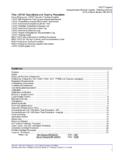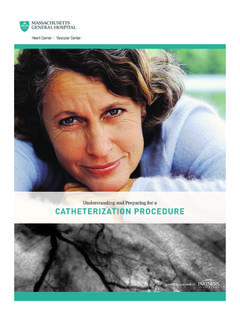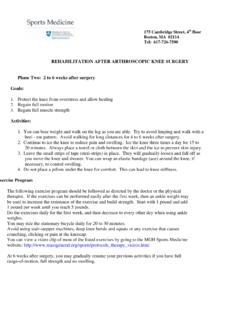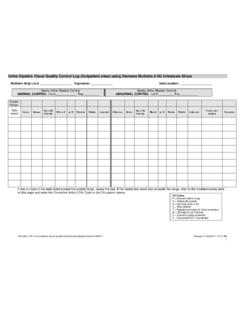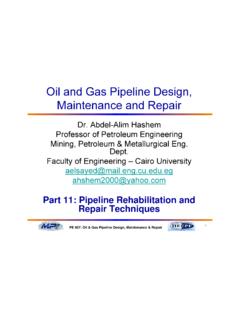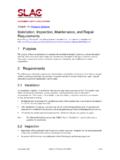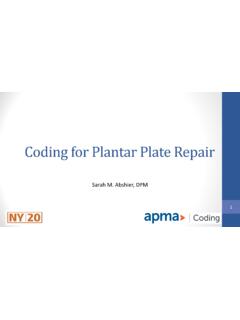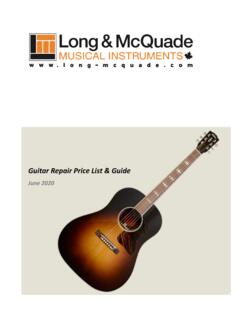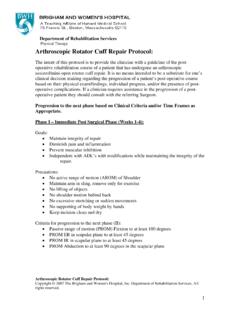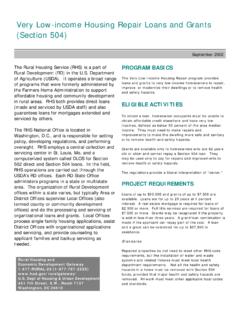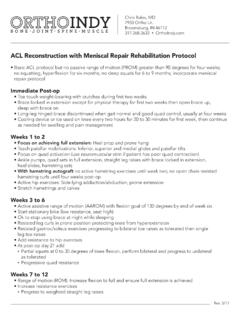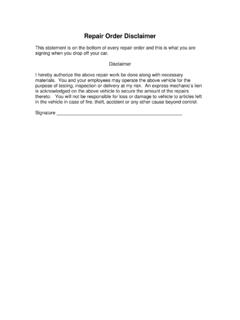Transcription of Rehabilitation Protocol for Achilles Rupture Repair
1 Mas s a ch u s etts G en era l Br ig h am S p o rts Me d icin e Rehabilitation Protocol for Achilles Rupture Repair This Protocol is intended to guide clinicians through the post-operative course for Achilles tendon Repair . This Protocol is time based (dependent on tissue healing) as well as criterion based. Specific intervention should be based on the needs of the individual and should consider exam findings and clinical decision making. The timeframes for expected outcomes contained within this guideline may vary based on surgeon s preference, additional procedures performed, and/or complications. If a clinician requires assistance in the progression of a post-operative patient, they should consult with the referring surgeon. The interventions included within this Protocol are not intended to be an inclusive list. Therapeutic interventions should be included and modified based on the progress of the patient and under the discretion of the clinician.
2 Considerations for the Post-operative Achilles tendon Repair program Many different factors influence the post-operative Achilles tendon Rehabilitation outcomes, including type and location of the Achilles tear and Repair . Consider taking a more conservative approach to range of motion, weight bearing, and rehab progression with tendon augmentation, re- Rupture after non-surgical management, revision, chronic tendinosis, and co-morbidities, for example, obesity, older age, and steroid use. It is recommended that clinicians collaborate closely with the referring physician regarding intra-operative findings and satisfaction with the strength of the Repair . If the patient develops a fever, unresolving numbness/tingling, excessive drainage from the incision, uncontrolled pain or any other symptoms you have concerns about, the referring physician should be contacted. P HA SE I: IMMED IA TE P OST-OP (0-3 W EEKS A F TER SURG ERY ) Rehabilitation Goals Protect Repair Maintain strength of hip, knee and core Manage swelling Weight Bearing Walking Non-weight bearing (NWB) on crutches in splint and/or Achilles boot.
3 Intervention Range of motion/Mobility (in boot/splint) Supine passive hamstring stretch Strengthening (in boot/splint) Quad sets Straight leg raise Abdominal bracing Hip abduction Side-lying hip external rotation-clamshell Prone hip extension Prone hamstring curls Criteria to Progress Pain < 5/10 P HA SE II: IN TERMED IA TE P OST-OP (4-6 WEEKS A F TER SURG ERY ) Rehabilitation Goals Continue to protect Repair Avoid over-elongation of the Achilles Mas s a ch u s etts G en era l Br ig h am S p o rts Me d icin e 2 Reduce pain, minimize swelling Improve scar mobility once incision is healed Restore ankle plantar flexion, inversion, and eversion Dorsiflexion to neutral Normalize gait as much as possible while in boot by utilizing a Shoe Leveler for the uninvolved side to prevent secondary musculoskeletal complaints. Weight Bearing Walking (**Weight-bearing, wedge use/weaning, and boot types may vary by surgeon/practice.)
4 Week 4: Begin partial progressive weight-bearing on crutches in an Achilles boot with 3 wedges (~1 in height each). Suggest gradually progress weight-bearing by 25% of body weight per week as tolerated until Full Weight-bearing (FWB) through the surgical side without pain. Week 5: Wean one heel wedge leaving 2 wedges remaining in Achilles Boot. Week 6: Wean 2nd heel wedge, leaving 1 wedge remaining in Achilles Boot. Additional Intervention *Continue with Phase I interventions Range of motion/Mobility Initiate ankle passive range of motion (PROM), active assisted range of motion (AAROM) and active range of motion (AROM) - DO NOT dorsiflex (DF) ankle past 0 degrees o Ankle pumps (do not DF ankle beyond neutral/0 degrees) o Ankle circles (do not DF ankle beyond neutral/0 degrees) o Ankle inversion o Ankle eversion o Seated heel-slides for ankle DF ROM (not past 0 degrees) If stiff from immobilization, initiate great toe DF and PF stretching (by patient or therapist) Do not exceed neutral (0 degrees) DF when performing this stretch.
5 Foot and ankle joint mobilizations: per therapist discretion o Modify hand placement to avoid pressure on healing incision May begin gentle scar mobilization once incision is healed - NO instrument assisted soft tissue mobilization (IASTM) directly on tendon until at least 16 weeks post-op. Cardio Upper body ergometer Strengthening Continue proximal lower extremity strengthening as in Phase I Lumbopelvic Strengthening: planks (in Achilles Boot) Once able sit with foot flat on the floor with ankle close to neutral DF: o Seated heel raises o Seated arch doming o Exercises for foot intrinsic muscles to minimize atrophy while in boot Proprioception Joint position re-training Criteria to Progress Pain < 3/10 Minimal swelling (recommend water displacement volumetry or circumference measures such as Figure 8) Full ROM PF, eversion, inversion DF to neutral Optimal gait in Achilles Boot with 1 wedge, crutches and Shoe Leveler on uninvolved side P HA SE III: L ATE P OST-OP (7-8 W EEKS A F TER SURG ERY ) Rehabilitation Goals Continue to protect Repair Avoid over-elongation of the Achilles .
6 No overt stretching of the Achilles . Normalize gait in Achilles Boot without wedges using a Shoe Leveler for the uninvolved side. Restore full range of motion including DF Safely progress strengthening Promote proper movement patterns Avoid post exercise pain/swelling Mas s a ch u s etts G en era l Br ig h am S p o rts Me d icin e 3 FWB in boot without wedges, without crutches, with good tolerance and normalized gait pattern by week 8 Weight Bearing Walking Week 7: Remove final heel wedge from Achilles Boot. o WBAT/FWB with one crutch/no crutches as needed for normalized gait pattern in Achilles Boot without wedges, with Shoe Leveler on the uninvolved side (remove one layer of the Shoe Leveler) Week 8: FWB in Achilles Boot (no wedges) with Shoe Leveler on uninvolved without crutches Additional Intervention *Continue with Phase I-II Interventions as indicated. Range of motion/Mobility Continue seated heel-slides for DF ROM to tolerance DF ROM no longer restricted but continue to gently progress.
7 Continue toe stretching as needed Gentle stretching of proximal muscle groups as indicated: (Examples: standing quad stretch, standing hamstrings stretch, kneeling hip flexor stretch, piriformis stretch) Ankle/foot mobilizations (talocrural, subtalar, midfoot, MTPs) as indicated No overt stretching of the calf in NWB or weight-bearing. NWB stretches such as calf towel stretch should only be implemented if DF ROM progression is delayed Cardio Stationary bicycle (in Achilles boot) Strengthening 4 way ankle with resistance band Lumbopelvic strengthening: bridges on physioball, bridge on physioball with roll-in, bridge on physioball alternating Gym equipment: hip abductor and adductor machine, hip extension machine, roman chair o Progress intensity (strength) and duration (endurance) of exercises Criteria to Progress No swelling/pain after exercise Normal gait in Achilles boot without wedges or need for crutches ROM equal to contralateral side Joint position sense symmetrical (<5 degree margin of error) P HA SE IV.
8 TRA N SITION A L (9-10 W EEKS A FTER SURG ERY ) Rehabilitation Goals Maintain full ROM Normalize gait in supportive sneaker with 1 cm heel lift Avoid over-elongation of the Achilles Safely progress strengthening Promote proper movement patterns Avoid post exercise pain/swelling Weight Bearing Walking Transition to sneaker with 1 cm heel lift (FWB) Additional Intervention *Continue with Phase I-III interventions as indicated. Range of motion/Mobility Ankle/foot mobilizations (talocrural, subtalar, midfoot, MTPs) as indicated Continue Seated ankle heel-slides for DF. Progress to standing ankle dorsiflexion stretch on step. Cardio Stationary bike, flutter kick swimming/pool jogging (only if incision fully healed) Strengthening Begin Standing calf raise progression: (based on tolerance/performance and will extend into the later phases) o Bilateral standing heel raises (25% body weight thru involved leg) o Bilateral standing heel raises (50% equal weight through both legs) o Bilateral standing heel raises (75% body weight thru the involved leg) Mas s a ch u s etts G en era l Br ig h am S p o rts Me d icin e 4 Knee Exercises for additional exercises and descriptions Gym equipment.
9 Seated hamstring curl machine and hamstring curl machine, leg press machine Balance/proprioception Double limb standing balance utilizing uneven surface (wobble board) Single limb balance - progress to uneven surface including perturbation training Criteria to Progress No swelling/pain after exercise Normal gait in supportive sneaker with 1 cm heel lift P HA SE V : TRA N SITION AL (11-1 2 W EEKS AF TER SURG ERY ) Rehabilitation Goals Maintain full ROM Normalize gait in supportive sneakers without heel-lift Avoid over-elongation of the Achilles Safely progress strengthening Promote proper movement patterns Avoid post exercise pain/swelling Weight Bearing Walking Wean heel-lift from sneaker. Normalize gait pattern. Additional Intervention *Continue with Phase I-IV interventions as indicated. Continue to progress with interventions for ROM, cardio, strengthening, balance and proprioception from previous phases as indicated.
10 Criteria to Progress No swelling/pain after exercise Full ROM during standing bilateral concentric calf raise with equal weight bearing through both legs Normal gait in supportive sneakers P HA SE VI: AD V AN C ED P OST-OP (3-6 MON THS A F TER SURG ERY ) Rehabilitation Goals Safely progress strengthening Promote proper movement patterns Avoid post exercise pain/swelling Avoid over-elongation of the Achilles Good tolerance with progression to plyometrics and agility training Additional Intervention *Continue with Phase II-V interventions as indicated. Range of motion/Mobility Continue Standing ankle DF mobilization on step If indicated, may initiate gentle IASTM directly to the tendon beginning at 16 weeks. Cardio Elliptical, stair climber Strengthening If able to perform bilateral standing heel raises with 75% of body weight through the full range of involved limb, progress to eccentric calf raises (bilateral raises, unilateral lowering on involved) on level surface followed by progression to unilateral heel raises.




